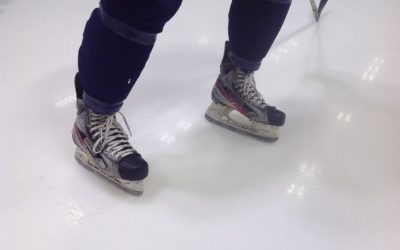Hand-eye coordination: the goalkeeper’s tool par excellence
The athletic qualities required of a goalkeeper are varied and often complex. Trainers compete with each other to find new exercises that will improve the key elements of their performance. One of the physical qualities often described as essential for goalkeepers is hand-eye coordination. The advent of the Internet and social media has brought with it a whole host of original exercises designed to improve this performance parameter. Yet very few trainers really know what hand-eye coordination is and what determines its effectiveness. Here’s a simplified overview of this neuroscience theory.
What is hand-eye coordination?
Every hand movement requires a spatial objective (a target) determined by the visual system. This is not only a sensory system (detection of an object in space), but also a motor system (movement of the eye in its orbit in search of the target). In other words, the eye must move at the same time as recognizing the object towards which the hand will be directed. In the temporal sequence, the eye movement is performed before the hand movement is initiated, in order to identify the target.
For goalkeepers, the eye must be able to determine the puck’s trajectory quickly, so as to initiate the hand movement as soon as possible. Because the speed of a field hockey shot is so high, there are almost no corrections possible after the initial hand movement. The gesture must therefore be precise from the outset.
Can hand-eye coordination be improved?
Hand-eye coordination is one of the elements of the basic motor repertoire that should be developed in young people. Childhood is an ideal time for this kind of improvement, because the motor window is open. What’s more, with a view to diversifying youth sports, hand-eye coordination is useful in many of the sports in which the young athlete will participate. This can also be seen in reverse: playing several sports will enable a more diversified repertoire of hand-eye coordination, with a greater capacity for adaptation.
When we talk about improving hand-eye coordination, we’re mainly talking about improving the speed and accuracy of object trajectory identification, as well as synchronizing movement with the information acquired.
In conclusion, hand-eye coordination is a fundamental element of basic motor development that should be stimulated in all children. As for the specific development of this quality for experienced goalkeepers already possessing a good motor foundation of hand-eye coordination, the scope for improvement is much more complex and sport-specific. More on this in a future SciencePerfo article.
Written by Léandre Gagné Lemieux, M.Sc. kinesiology
References
1. Jeannerod M (1986) Mechanisms of visuomotor coordination: a study in normal and brain-damaged subjects. Neuropsychologia 24(1):41-78.
2. Paillard J (1996) Fast and slow feeback loops for the visual correction of spacial errors in a pointing task: a reappraisal. Can J Physiol Pharmacol 74(4):401-417.
3. Schmidt RA and Lee TD (2005) Motor control and learning: A behavioral emphasis. Champaign, Human Kinetics.
Want to stay on top of new articles before they’re published?
Subscribe to our newsletter.
From the same author
Why is it easier to turn left?
Why is it easier to turn left? MAXIME Sports physiotherapist In a field hockey match, various skating techniques are used to counter the opponent. A technique of choice for quickly changing direction while maintaining good speed is the sharp turn. On the one hand,...

